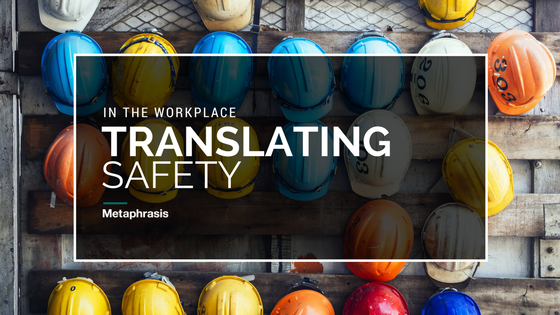
Translating Safety in Your Workplace
According to the United States Department of Labor, Bureau of Labor Statistics (BLS), the employment of translators and interpreters is expected to grow by 29 percent from 2014 to 2024.
This is attributed to an increase in globalization along with a more diverse population in the United States. A more diverse population may also mean an increase in multilingual employees or employees with limited English proficiency (LEP).
Additionally, the Occupational Safety and Health Administration (OSHA) updated their policy in 2016 to require employee safety training “using both a language and vocabulary that the employees can understand.” Similar to legislation within the healthcare industry, the onus is on the employer to provide language access. In other words, if your employees are non-English speaking, not proficient enough in English, or understand better in their native language, then safety translation is a necessary offering.
If you have a multilingual workforce and are in the industrial sectors (manufacturing, chemical, food production, etc.) this will be of importance to you. Here are a few great places to take a look at within your safety protocols.
Employee Handbooks
Employee handbooks are important tools for communication between an employer and their employees. They contain important information including (by not limited to) anti-discrimination policies, company policies, compensation, general policies and procedures, employee benefits, information technology, leave, safety and security. Employee handbook translation can ensure that a multinational company or a domestic company with multilingual workers has all of this important information presented to them in their native language. (see an earlier post we did on multilingual HR)
Safety Data Sheets (SDS)
Safety Data Sheets (SDS) communicate the risks, hazards, and protocols for hazardous chemical products and materials. A lot of times, the wording can be difficult to understand. Translating your Safety Data Sheets will help multilingual employees better understand the risks, hazards, and protocols which will lead to a safer workplace.
Employee Training Content
Employee safety training can help prevent injury and illness in the workplace. Whether it is personal protective equipment, lockout-tagout (LOTO) training, hazard communication, forklift safety and operation, employee training is required and provided. Training content may include videos, PowerPoint presentations, classroom training, on-site training, or eLearning. Think in terms of both document translation and a live training event.
Bottom line safety should always be top of mind. Getting that message across to employees in the clearest way possible should include a language access strategy for all documentation and training. If you need to assess your current safety training translations, let’s get in touch!
